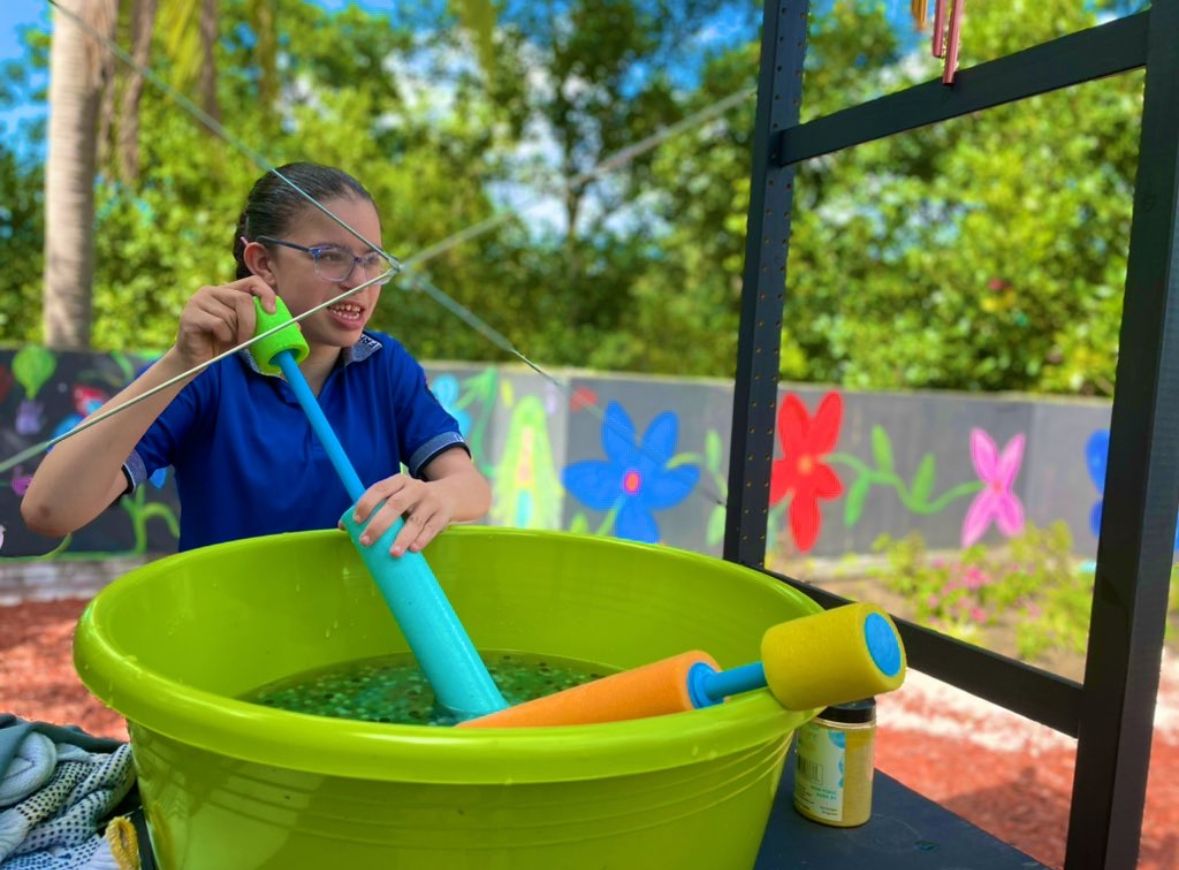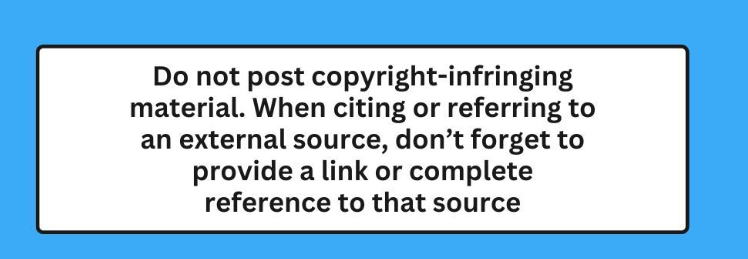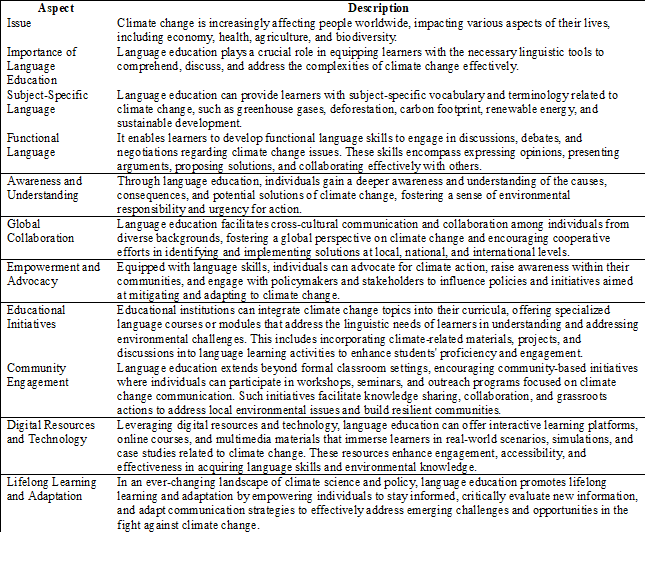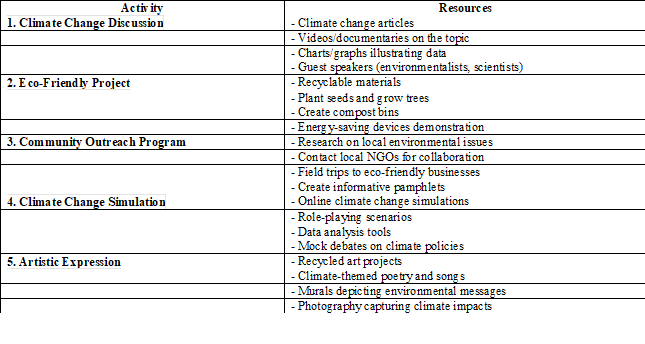 Nice topic
Nice topic
-
Activities and resources for teaching about Climate Change
"Empowering students through engaging education, fostering environmental consciousness, and advancing scientific literacy. Committed to shaping future leaders in Life and Earth Sciences."
-
@Bousl2336873cb4
My appreciation for this useful activities, I'll definately use them, perfect. -
I really like the idea of inviting a guest speaker to a classroom!
It can be organized virtually as well, the guest can be even from a different country.
Have you heard of a project "Skype a Scientist"? It matches your classroom with scientists for Q&A sessions, there is a big database, where you can find a guest speaker if you want to talk about climate change -
Climate change for me is summed up in the minimal actions of our young people and particularly my students in class......Each year I teach more than 120 students and only 20% of them get involved with this notion of our future on earth, I believe that my objective will be achieved......Am I right Ms. Anastasia?
"Empowering students through engaging education, fostering environmental consciousness, and advancing scientific literacy. Committed to shaping future leaders in Life and Earth Sciences."
-
Creating a sensory garden on a school green roof was a wonderful strategy to involve my students with disabilities in climate change education. By incorporating sensory elements such as diverse textures, colors, scents, and sounds, the garden can provide a stimulating and inclusive learning environment.
This hands-on approach allows students to engage directly with nature, fostering an understanding of plant life cycles, biodiversity, and the role of green spaces in combating climate change. Integrating the garden into the curriculum through activities like planting, watering, and observing growth not only teaches responsibility but also makes the topic of climate change tangible and relevant. Ensuring accessibility with features like raised beds and clear pathways and involving the broader school community through events and workshops, can further enhance the educational impact and promote a collective commitment to sustainability.
-
Their mission is simple, yet impactful: to make science accessible and fun through personal connections with scientists. Amazing. We need more Scientifics, and this will promote that reality. I will try it next school year.
Here is the link: https://www.skypeascientist.com/
-
@BRYANb8875625e5 said in Activities and resources for teaching about Climate Change:
Creating a sensory garden on a school green roof was a wonderful strategy to involve my students with disabilities in climate change education. By incorporating sensory elements such as diverse textures, colors, scents, and sounds, the garden can provide a stimulating and inclusive learning environment.
Great! Do you have pictures of it? Could you share some of them so we see how it looks?
-






-
@BRYANb8875625e5
Perfect! Really making sense. -
It was an amazing project. I try inclusion by giving each student with autism a shadow with no disability. The results were incredible. Know I'm teaching them how to code a FarmBot to apply technology in the lesson. In three weeks, they will be on vacation but I'm taking advantage of every second with them.
Best Bilim,
Mr. Bryan -
This page is amazing to learn about climate change with interactive games for the classroom.
https://subjecttoclimate.org/blog/10-climate-change-games-for-the-classroom
Interactive games can be a powerful tool in fostering a proactive mindset among students with or without disability regarding climate change. These games can simulate real-world environmental challenges, allowing students to experiment with sustainable practices and observe the consequences of their decisions in a risk-free environment.
By engaging students in scenarios that require critical thinking, problem-solving, and collaboration, interactive games can deepen their understanding of climate issues and inspire them to adopt eco-friendly behaviors. Like the sensory garden we made at our program. Moreover, these games can make learning about climate change fun and engaging, encouraging students to become active participants in the fight against global warming and instilling a sense of responsibility for the planet’s future.
I have hope in a new generation of students with climate change mindset-
-
Dear ma'am Ana . I have Searched some activities and resources for primary school students.
That may be beneficial for all teachers who teach science subject. Teaching climate change to primary school students can be both engaging and educational. Here are some activities and resources that can help:****Activities
Interactive Storytelling*Use stories and picture books that explain climate change in simple terms. Books like "The Lorax" by Dr. Seuss can be a great start. Climate Change Art Projects* Have students create posters or drawings that depict the effects of climate change and ways to help the environment. Nature Walks and Observations Take students on nature walks to observe local flora and fauna. Discuss how climate change might affect these plants and animals. Recycling Projects Organize a recycling drive or craft projects using recycled materials to teach the importance of reducing waste. Simple Science Experiments Conduct experiments that demonstrate the greenhouse effect, such as using jars to show how heat is trapped. Gardening Start a school garden to teach students about plant growth, the importance of green spaces, and how plants can help combat climate change. Climate Change Games Use educational games and simulations that teach about climate change and environmental conservation. Resources Books "The Lorax" by Dr. Seuss "The Magic School Bus and the Climate Challenge" by Joanna Cole "What is Climate Change?" by Gail Herman Websites NASA Climate Kids: Offers games, activities, and articles about climate change tailored for kids. National Geographic Kids: Provides articles, videos, and activities about the environment and climate change. EPA's A Student's Guide to Global Climate Change: Interactive website with information and activities. Videos YouTube Channels: Channels like SciShow Kids and National Geographic Kids have videos explaining climate change in a kid-friendly manner. Documentaries: Short documentaries like "Our Planet" (Netflix) have episodes suitable for children. Apps and Games Earth Rangers: An app that engages kids in missions to protect animals and the environment. WWF Together: An app that teaches kids about endangered species and conservation efforts. Lesson Plans Scholastic: Provides lesson plans and resources for teaching about the environment and climate change. Interactive Tools Climate Change Simulator: Simple online tools that allow students to see the impact of different actions on the climate. Carbon Footprint Calculators: Kid-friendly calculators that help students understand their own impact on the environment. Tips for Teaching Simplify Concepts: Use age-appropriate language and examples to explain complex concepts. Be Positive: Focus on solutions and actions that students can take to make a difference. These activities are really helpful for teachers in terms of resource management. -
@Mariam said in Activities and resources for teaching about Climate Change:
I have Searched some activities and resources for primary school students.
Dear Mariam, thank you for such a detailed selection of materials!
If you have taken this information from a website or other source, please be sure to include a link to that source in accordance with the forum rules and guidelines
https://elibrary-forum.sdpsg.101.com/topic/17/forum-rules-and-guidelines
-
@BRYANb8875625e5
You are soooo dedicated, Bryan. Chinese proverb comes to my mind regarding teaching activity "in order to give a glass of water to his/her student, a teacher has to have a pail of water" We collect spring water by working and growing with our students and colleagues.
Have a fascinating rest you as well to start with tank of water your next academic year!Best regards,
Bilim -
@Ana_moderator sure I Will .
-
This table outlines how language education can serve as a vital tool in addressing the challenges of climate change by providing learners with the necessary linguistic skills, knowledge, and resources to understand, communicate, and collaborate on solutions at local, national, and global levels.

-
These activities and resources aim to make learning about climate change engaging, interactive, and relevant to students' lives (see table)

-
Certainly! Here's a structured table providing information on how teaching about climate change can be engaging and impactful with the right activities and resources (see resum in table)
These approaches can make climate change education not only informative but also engaging and impactful for students of all ages.

-
These activities and resources aim to provide a well-rounded approach to understanding climate change, engaging students through discussion, hands-on projects, community involvement, simulation exercises, and artistic expression.

-
@Ana_moderator IAM sharing a link from Google that can help teachers to find more resourcesl material for their teaching techniques. I hope that could be helpful https://www.weareteachers.com/climate-change-activities/